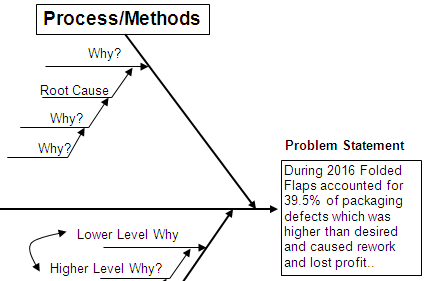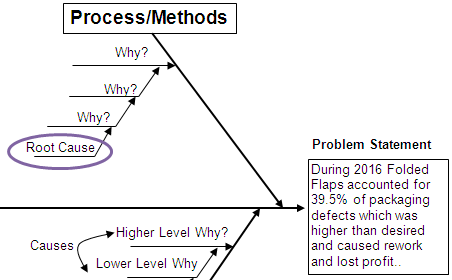Six Sigma Project Problem #4 - Fishbone Problems
I think Ishikawa-Fishbone diagrams are one of the hardest tools to learn in Six Sigma. It sounds simple, just ask Why five times. But getting the logic right is not always easy.
Fishbone Problems
It seems obvious, if the root cause analysis is flawed, the countermeasures will fail. Here's some common problems:

- Logic chain is flawed - In the process of asking why, why, why, why, why, the logic chain can break down. A higher level why can end up below a lower level why. Simple solution: check the logic chain. Every time you ask why to go down a level, check the logic by going up: this causes this causes that causes the problem statement. If it doesn't sound right, the logic is flawed.
- Root cause is not the last bone in the chain - I often see countermeasures that reflect a root cause in the middle of a 5-why chain. If it's not the last bone, it's not the root cause. Only the last bone can be a root cause. Fix the fishbone or countermeasures.
- Root causes not circled - Not every chain has a root cause. Circle the ones that are root causes.
The solution is simple: 1) check the logic as you do root cause analysis, 2) circle the root causes and 2) use those root causes to develop countermeasures.

Rights to reprint this article in company periodicals is freely given with the inclusion of the following tag line: "© 2016 Jay Arthur, the KnowWare® Man, (888) 468-1537, support@qimacros.com."

 Take our FREE Lean Six Sigma Yellow Belt training online.
Take our FREE Lean Six Sigma Yellow Belt training online.
